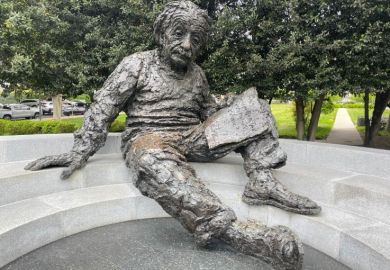In this pair of stimulating books, V. S. Ramachandran and Michael S. Gazzaniga, both distinguished contributors to the flourishing interdisciplinary field of cognitive neuroscience, present their views to a general audience. The cases and themes they address are very similar, and both are a pleasure to read and valuable contributions to popular science. Gazzaniga provides an engaging tour and overview of the field, though at times his descriptions of experiments are puzzlingly oversimplified. Ramachandran's orientation is towards clinical neurology and his chapters are organised around intriguing case studies. His discussions are full of fascinating anomalous details and do-it-yourself demonstrations of illusions: how to make your nose feel several feet long; how to assimilate a table into your body image so that hammering the table produces galvanic skin responses you would expect to get from an attack on your person. The fun is followed up by explanation or theoretical speculation with more general implications, and often by imaginative and simple experiments. While both books are richly thought-provoking, in general Ramachandran's book makes the more compelling reading of the two, because of its wealth of clinical details, the lucidity of his theorising, and the ease with which he moves between them.
Ramachandran is well known for his work on phantom limbs, and his chapters on this topic are not to be missed. Two aspects of the plasticity of brain function revealed by phantoms are especially fascinating: the remapping of sensory inputs to the brain, and the use of visual illusions to cure intractable pain felt in phantom limbs. Patients who have lost limbs frequently experience vividly their lost limb as still with them. If the limb was paralysed before amputation the phantom may be paralysed, but often it will be active: a phantom arm may gesture as the patient speaks, or reach for a cup of coffee.
Sometimes the brain "hallucinates" agonising pain in the phantom, incurable by further surgery. One patient's phantom hand was continually clenched into a tight fist so that his fingernails dug excruciatingly into his palm, and he was unable to release the clench. Ramachandran helped the patient using a simple box with a mirror. When the patient inserted his real arm into one side of the box, its mirror image was seen on the other side, creating a visual illusion of an arm where the phantom was felt to be. The patient unclenched his real fist while also trying to unclench his phantom, creating illusory visual feedback as of the phantom unclenching. Success was instant: the phantom hand was felt to unclench and the pain went away, so long as the patient used the box. The visual illusion competes with the brain's own "hallucination" about the phantom, and wins.
Several of the syndromes discussed in these books illustrate cognitive entrapment: the commandeering of reason and inference, in some cases by sensory-motor disorders. We tend to think of sensory-motor functions as peripheral to the cognitive heart of intelligence. But both normal and pathological cases provide reason to think that cognition and rationality may be more intimately bound up with mere sensory-motor functions than we usually assume. When we think about seeing or doing something, many of the same brain circuits are used as when we actually see or do that thing; as athletes and musicians know, imaginary practice improves physical performance. And Ramachandran points out that while "we ordinarily think of our intellect and 'high-level' knowledgeI as being immune to the vagaries of sensory input", some of his neurological patients teach us that this need not be true. "Not only is their sensory world warped, but their knowledge base is twisted to accommodate the strange new world they inhabit."
The most striking illustrations of cognitive distortion may be cases of anosognosia, in which patients flatly deny having a major deficit, such as a paralysed arm, or even blindness, and purport to be able to carry on as if nothing were wrong. Faced with the inconsistency between reality and the story they tell, they may rationalise or confabulate in increasingly extraordinary ways. Amazingly, cold water squirted into the appropriate ear may bring about an immediate though temporary cessation of this propaganda exercise: a patient whom no amount of reasoning or evidence could induce to admit that her arm is paralysed now willingly agrees that it is indeed paralysed and has been for some time. At some level, the knowledge is there. But a few hours later, she has again gone into denial and rewritten her script, now denying her earlier admission of paralysis.
Ramachandran explains why this syndrome goes far beyond normal "Freudian" defensive repression and rationalisation, but he argues that it does not stem merely from a sensory-motor deficit either. Rather, he suggests an explanation in terms of the role of the left hemisphere in creating a coherent, stable narrative or interpretation, sifting through the massive array of detailed inputs, ordering them and folding them into an existing world-view, ignoring anomalies or distorting them to fit. Gazzaniga argues for a very similar role for a left hemisphere "interpreter", which tries to make sense of the present in relation to the past of a nervous system, in some cases resolving anomalies by reconstructing the past.
In Ramachandran's view, the right hemisphere plays the role of revolutionary, questioning the status quo and drawing attention to anomalies. The right hemisphere keeps the left's story-telling in check. But when the right hemisphere is damaged, the left gets free rein and its narratives may float free of unpleasant realities such as paralysis. As he says, this hypothesis may well be too simple, but it suggests new questions and experiments on denial syndrome and has received some support from brain imaging.
The two books share other major themes beside that of the left hemisphere interpreter. Gazzaniga describes many examples of what he calls our "automatic brain" at work, and related cases are spoken of by Ramachandran in terms of "zombies" in the brain. Blindsight is the most familiar of these cases. When it was first discovered it was regarded as anomalous, but now such "covert processing" is cropping up in a wide variety of neurological syndromes. Brain damage may dissociate conscious recognition from covert processes that normally work in sync with consciousness, revealing the complexity that underlies and enables apparently seamless normal functioning. For example, prosopagnosics, who can no longer recognise faces consciously, show galvanic skin responses to familiar faces, and covert face recognition appears to affect their performance on related tasks. On the other hand, people with Capgras syndrome have no trouble recognising faces, but show no galvanic skin responses to familiar faces and may regard their closest family members as alien impostors.
Gazzaniga says that a fundamental point has long been missed: that "98 per cent of what the brain does is outside of conscious awareness". Has it been missed, or is it too obvious to miss? When I experience the colour red, I have self-consciousness in relation to that experience. But I have no (not even 2 per cent) conscious access to what my brain is doing to enable me to experience it - any more than I have conscious access to what my liver is doing. When I make a decision, I have conscious access to what I myself am doing. But self-description does not automatically translate into brain description. Lots of empirical work is needed to make out these connections. And even if these are just different ways of talking about the same thing, does anyone suppose that access to a description of myself as acting should give me access to the very different description of the brain processes that account for what I do? Or that when anything happens in my brain I must necessarily know about it?
Gazzaniga at times neglects to distinguish these levels of description - one danger of an over-colloquial presentation - as when he says: "The decision has already been made when our conscious self catches up with these (brain) activities and declares that we have made the decision." But talk of brain activities is not logically equivalent to talk of decisions. No dualistic belief in a separate mental substance is implied, just a dualism of levels of description that do not transparently map onto one another.
Gazzaniga and Ramachandran also argue that the self is a fiction, an illusion, not really in charge of our actions; this is one of Gazzaniga's central claims. Though neither considers the arguments that philosophers such as Hume and Parfit have made for related claims, both seem to regard the illusoriness of the self as a natural conclusion to draw from the evidence they adduce of the activities of the automatic brain and the interpreter. But the move from their evidence to this conclusion is too swift, and in both cases under-argued. We can come to understand how minds are made up in one sense (what they are) without concluding that minds are made up in another sense (that they are fictions).
The authors provide the materials to see how. Ramachandran explains that a popular view sees the brain as consisting of a number of specialised, autonomous modules acting as a bucket brigade, each one performing a specific task and sending its output on to the next, in a one-way cascade of information. The massive anatomical back-projections from "later" to "earlier" areas are too often given "more lip service than functional meaning". Ramachandran's work, along with a growing body of other work, shows that this is not how the brain functions; its connections are highly labile and dynamic and cross between levels and modules in an intricate tangle. Consciousness emerges from this complex dynamic. Ongoing relationships rather than end-products are crucial; comparisons between actual and remembered or expected feedback can make the difference between excruciating pain and the absence of it. "All our perceptions - indeed, maybe all aspects of our minds - are governed by comparisons and not by absolute values."
The point can be expanded. At the level of our conscious selves, we normally perceive first, then we think about what we have perceived and what we should do, then we act. It is natural to suppose that whatever processes in our brains enable us to perceive, think, and act should mirror this forward flow. But the mapping between levels may not be so tidy. Increasingly it is realised that feedback loops and circular causal processes and anatomical back-projections are essential to brain functions. As a result, there is no necessary isomorphism between the perception/thought/act sequence and the causal structure of the underlying processes in our brains.
But this does not mean that our selves or their properties are illusions. Emergent properties of the world may not be unreal, and these may include properties of perceiving, thinking, acting selves that emerge from the activities of embodied brains interacting with environments. As Gazzaniga says: "The only thing that counts is information about the world in the brain, not whether the brain resembles the world." But this remark applies as much to self-conscious selves as to other denizens of the world. Why should we suppose that selves should resemble the brain either? If brain processes that enable us to perceive the colour green are not themselves green, no one would suppose that makes our perceptions of green illusory. Gazzaniga also says, in discussing experiments by Libet, that the brain does not use the timing of its own firing to represent timing in the real world. But this does not make our perceptions of temporal sequence in the real world illusory. So why should the timing of brain events have to be used to represent timing of the decisions of selves, any more than of other events in the world? And if it turns out not to be, why should this make it the case that, as Gazzaniga suggests, we are really only watching a movie of our life, of our brain's "done deals", and are not ourselves really involved?
We selves do not resemble the "zombies" in our brain or share their structure. What we selves get up to is not transparently related to the automatic brain processes that underlie and enable our doing what we do. But neither Gazzaniga nor Ramachandran shows why from this we must infer that the self and its decisions are illusory, that our self-consciousness is any more illusory than our consciousness of the rest of the world. They fail to consider how the insight that the brain need not resemble the world it truthfully represents might apply to the self itself. After all, on a naturalistic view the self is part of the world, and a part represented by the brains of self-conscious creatures like us.
Does the interpreter provide grounds for the illusory self thesis? The interpreter may routinely reinterpret and even falsify data in order to protect coherence; in extreme cases like anosognosia the interpreter may be out of control. Gazzaniga and Ramachandran shed much light on how and why this happens. But that it happens does not show that in normal situations our sense of self and of control are illusory. The interpreter device that the brain uses in the normal course of things may just be one of the ways the brain enables us, when things are functioning properly, to be selves in relative control of ourselves. Again, these fascinating phenomena may teach us how our selves are made up rather than that our selves are fictions.
Susan Hurley is professor of philosophy, University of Warwick.
The Mind's Past
Author - Michael S. Gazzaniga
ISBN - 0 520 21320 3
Publisher - University of California Press
Price - £16.95
Pages - 201
Register to continue
Why register?
- Registration is free and only takes a moment
- Once registered, you can read 3 articles a month
- Sign up for our newsletter
Subscribe
Or subscribe for unlimited access to:
- Unlimited access to news, views, insights & reviews
- Digital editions
- Digital access to THE’s university and college rankings analysis
Already registered or a current subscriber? Login



